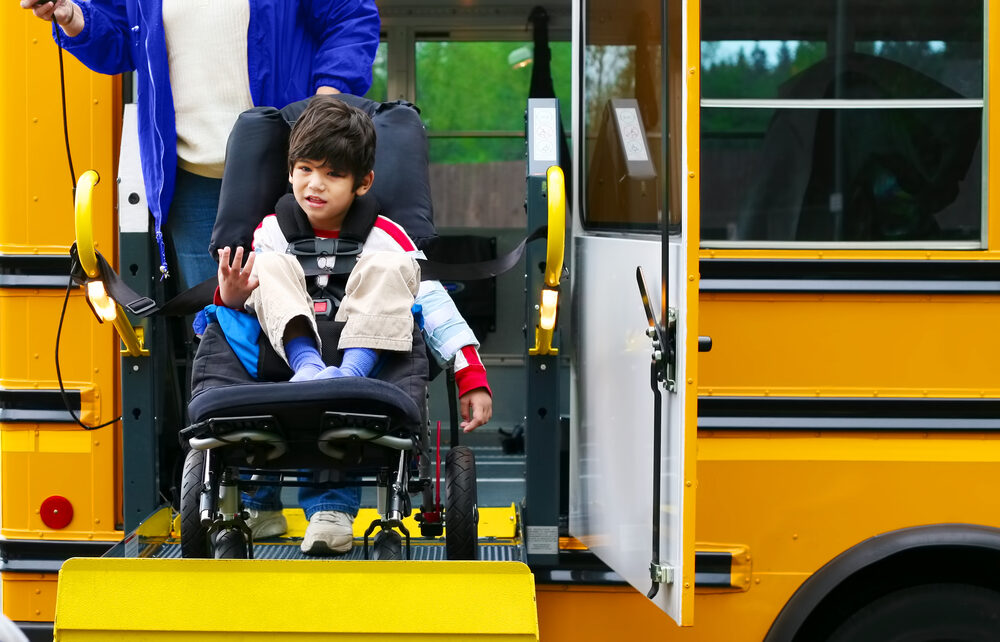Defining Cerebral Palsy and Its Causes
Cerebral Palsy (CP) is a neurological disorder characterized by impaired muscle movement and coordination. The condition stems from damage to the brain as it develops, which can occur before birth, during delivery, or in the early years of a child’s life. The causes of CP are multifaceted and can include genetic anomalies, maternal infections, fetal stroke, lack of oxygen during birth, and severe jaundice, among others. The level of medical received can determine whether the birth injury was due to negligence or not.
The impact of CP on an individual can vary greatly, with some experiencing mild symptoms and others facing more severe physical challenges. Despite the difficulties it may present, many individuals with CP lead rich and fulfilling lives. The following points outline key aspects of CP:
- Etiology: CP is caused by abnormal brain development or damage to the developing brain, affecting a person’s ability to control their muscles.
- Classification: The disorder is often classified according to the type of movement disturbance and the body parts affected.
- Incidence: CP is the most common motor disability in childhood, with a global prevalence of about 2 to 2.5 per 1000 live births.
- Diagnosis: Early diagnosis and intervention are crucial for managing CP, although symptoms may change over time.
Understanding CP is the first step towards fostering a supportive environment that encourages independence and celebrates the unique abilities of each individual.
The Spectrum of Movement and Coordination Challenges
Individuals with cerebral palsy (CP) face a range of movement and coordination challenges that can significantly affect their daily lives. These challenges vary widely from person to person, reflecting the diverse nature of CP. For some, maintaining balance for basic activities is a struggle, while others may find participation in sports or recreational activities more difficult. The ability to control one’s posture is crucial, not only for physical activities but also for academic success, as it enables a child to focus and learn effectively in a classroom setting.
Physical and occupational therapies play a pivotal role in addressing these challenges. By integrating sensory and motor skills development, therapists can help improve coordination and balance. Techniques such as whole-body vibration can enhance balance stabilization and sensory awareness, leading to better motor control. Additionally, targeted interventions are designed to support individuals with CP in various aspects of life:
- Ambulation and transfer techniques for daily living
- Activities to promote handwriting readiness
- Toilet training support
- Pre-driving assessments for individuals with disabilities
- Work rehabilitation programs
- Leisure and recreational activities tailored for disabilities
- Constraint Induced Movement Therapy (CIMT) for children with CP
- Guidance in choosing a suitable wheelchair
These interventions aim to empower individuals with CP to gain greater control over their movements, thereby enhancing their confidence and overall well-being. As each person’s experience with CP is unique, personalized strategies are essential for fostering independence and improving quality of life.
Types of Cerebral Palsy and Their Characteristics
Cerebral Palsy (CP) manifests in various forms, each with distinct characteristics and challenges. The primary types include:
- Spastic Cerebral Palsy: This is the most common type, characterized by increased muscle tone, which leads to stiff muscles and awkward movements.
- Dyskinetic Cerebral Palsy: Individuals with this type experience fluctuations in muscle tone, causing uncontrolled movements, especially in the arms, legs, and face.
- Ataxic Cerebral Palsy: This rare form affects balance and coordination. People with ataxic CP may have a shaky gait and struggle with precise movements.
- Mixed Cerebral Palsy: Some individuals exhibit symptoms of more than one type of CP, leading to a combination of movement challenges.
Each type of CP is further categorized based on the affected body region, such as hemiplegia, diplegia, quadriplegia, and monoplegia. Understanding the specific type and characteristics of CP is crucial for tailoring interventions and support to enhance an individual’s capabilities and quality of life. Early diagnosis and a personalized approach to management can significantly impact the developmental trajectory and independence of those living with CP.
Living a Fulfilling Life with Cerebral Palsy
Medical Advancements and Therapeutic Interventions
The landscape of medical care for individuals with cerebral palsy is continually evolving, with advancements in both technology and therapeutic practices offering new avenues for improved quality of life. Cutting-edge medical equipment and prescription assistance programs have become pivotal in managing the physical aspects of the condition.
A variety of treatment services are now available, ranging from traditional physical therapy to innovative approaches like equine-assisted therapy and creative arts therapy. These alternative therapies complement conventional treatments and can lead to significant improvements in movement and coordination for those with cerebral palsy.
Furthermore, the integration of mindfulness-based therapy and stress management techniques into treatment plans has shown promise in addressing the psychological challenges associated with cerebral palsy. The nurturing of social skills and the implementation of trauma-informed therapy are also critical components of a comprehensive care strategy.
- Constraint Induced Movement Therapy (CIMT) for Pediatric with Cerebral Palsy
- Medication Monitoring and Health Insurance Assistance
- Access to Specialized Therapeutic Nurseries and Transition Planning
These interventions, along with dedicated support coordination, ensure that individuals with cerebral palsy have the resources they need to navigate their unique challenges and lead fulfilling lives.
Empowering Individuals through Resources and Support
Empowerment for individuals with cerebral palsy is a multifaceted journey that involves understanding personal strengths, values, and motivations. It is essential to approach care with compassion and collaboration, tailoring support to each individual’s unique background and aspirations. Resources and support systems play a crucial role in this process, offering a variety of services aimed at enhancing life skills and promoting independence.
Key resources include:
- School-Based Services and Tutoring
- Employment Listings and Job Training Programs
- Independent Living Skill Programs
- Family Support and Caregiving Resources
- Professional Services and Community Programs
These services not only assist in preparing for adulthood but also provide essential support in areas such as employment, education, and family care. By leveraging such resources, individuals with cerebral palsy can navigate life’s challenges more effectively, fostering a sense of autonomy and fulfillment.
Planning for the Future: Education and Career Opportunities
For individuals with cerebral palsy, planning for the future encompasses a range of considerations, from education to career development. It is essential to recognize the unique potential of each person and to provide the necessary tools and support to help them achieve their goals.
- Education: Access to quality education is a cornerstone for future success. This includes specialized programs tailored to individual needs, such as special education services, tutoring, and enrichment activities. Schools and educational institutions play a critical role in fostering an inclusive environment that accommodates the diverse learning styles of students with cerebral palsy.
- Career Preparation: As individuals with cerebral palsy transition into adulthood, career preparation becomes a focal point. This involves exploring employment listings, participating in job training programs, internships, and vocational training. Supported employment and independent living skill programs can also be instrumental in helping individuals find meaningful work that aligns with their abilities and interests.
- Financial Planning: The financial aspect of planning cannot be overlooked. Early intervention and understanding health insurance options, including Medicaid waivers, are vital steps. Consulting with a financial advisor can help families create a sustainable plan that addresses the long-term needs of their child.
By addressing these key areas, families and individuals with cerebral palsy can lay a strong foundation for a future filled with hope and opportunity. It is a collaborative effort that involves educators, healthcare providers, community services, and advocacy groups working together to ensure that every individual with cerebral palsy has the chance to lead a fulfilling and productive life.
Cerebral Palsy Life Expectancy: A Spectrum of Possibilities
Factors Influencing Life Expectancy in Cerebral Palsy
Life expectancy in individuals with cerebral palsy (CP) is a complex issue, with a range of factors contributing to the duration and quality of life. These factors include the severity of the condition, associated health conditions, and the level of medical care received.
- Severity of CP: The impact of CP on an individual’s motor functions can vary greatly. Those with milder forms of CP often enjoy a longer life expectancy, while severe cases affecting vital functions can significantly shorten lifespan.
- Associated health conditions: Many individuals with CP also experience co-existing conditions such as epilepsy, respiratory problems, or intellectual disabilities. These additional health challenges can influence life expectancy.
- Medical care: Access to comprehensive medical care, including regular visits to specialists and therapists, is crucial. Effective management of CP can prevent complications and improve overall health outcomes.
Understanding these factors is essential for families and healthcare providers to navigate the challenges of CP and to optimize the care and support for those affected.
Improving Quality of Life and Longevity
Improving the quality of life and longevity for individuals with Cerebral Palsy (CP) involves a multifaceted approach that addresses both medical and lifestyle factors. Access to quality healthcare is paramount, ensuring that individuals receive the necessary treatments and interventions to manage their condition effectively. This includes regular screenings for common health issues that may accompany CP, such as respiratory conditions or musculoskeletal problems.
Lifestyle adjustments also play a critical role in enhancing well-being. Encouraging a healthy diet, regular physical activity, and sufficient rest can contribute to overall health and potentially extend life expectancy. Moreover, social engagement and mental stimulation are essential for emotional health, which can be fostered through community involvement and access to educational resources.
To support these goals, here are some key points to consider:
- Ensuring regular health check-ups and screenings for associated conditions
- Promoting a balanced diet and physical fitness tailored to individual abilities
- Facilitating access to mental health resources and social support networks
- Advocating for accessible housing and transportation to maintain independence
By addressing these areas, individuals with CP can lead fuller, more autonomous lives, and potentially see an improvement in their life expectancy.
Navigating Healthcare in Pennsylvania for CP Families
Families in Pennsylvania navigating the healthcare landscape for children with Cerebral Palsy (CP) have access to a variety of specialized resources. These resources are designed to provide comprehensive support, ranging from medical care to financial assistance.
Key organizations offering support include:
- The Children’s Hospital of Philadelphia (CHOP), known for its CP Center that delivers world-class diagnosis and treatment.
- The Pennsylvania Department of Health (DOH), which provides valuable information and resources, including financial assistance programs.
- United Cerebral Palsy of Pennsylvania (UCP of PA), which focuses on advocacy, education, and support for those living with CP.
Financial planning is also a critical aspect for these families. The costs associated with CP care can be substantial, and understanding the financial considerations is essential for long-term planning. Families are encouraged to explore the various programs and services available to them, ensuring they can secure the necessary care and support for their loved ones.
Sensory Enhancement & Cerebral Palsy
Understanding the Sensory Challenges in CP
Individuals with cerebral palsy (CP) often face unique sensory challenges that can affect their daily lives in profound ways. Sensory processing disorders, which can accompany CP, may lead to difficulties in distinguishing between different sensory inputs such as textures, tastes, or sounds. This can manifest as hypersensitivity, where mild stimuli become overwhelming, or hyposensitivity, where significant stimuli may go unnoticed.
- Sensory Overresponsivity: For those hypersensitive to sensory input, everyday environments can provoke strong reactions, such as anxiety or distress, to stimuli that others might find innocuous.
- Sensory Underresponsivity: Conversely, some individuals may not react to sensory inputs as expected, which can affect their ability to interact with the world around them.
It is crucial for families, educators, and caregivers to understand these sensory challenges. Education and awareness can lead to better support systems, allowing individuals with CP to regulate their responses more effectively. Personalized advice from experts on sensory processing disorders can also be invaluable in creating strategies to manage and mitigate the impact of these sensory difficulties.
Innovative Tools and Techniques for Sensory Improvement
The landscape of sensory enhancement for individuals with cerebral palsy is rich with innovative tools and techniques designed to foster better sensory integration and motor function. Wearable suits, vibration plates, and swings are just a few examples of the equipment that can provide targeted support for sensory regulation, postural control, and balance.
Therapeutic approaches such as sensory integration activities and mindfulness exercises are also pivotal in improving interoceptive awareness. These practices enable individuals to better manage their sensory experiences and enhance self-regulation skills. For instance, the Interception Curriculum developed by Kelley Mahler is a resource that therapists use to bolster sensory awareness from within.
- Establish a Sensory Diet: Collaborate with a therapist to create a personalized sensory diet that integrates beneficial sensory activities into daily routines.
- Create a Sensory-Friendly Environment: Adjust the home environment to minimize sensory triggers, utilizing tools like soft lighting and noise-canceling headphones.
- Celebrate Small Victories: Recognize and honor the incremental progress made by children with cerebral palsy, as each step forward is a triumph.
In addition to these strategies, whole-body vibration is utilized to enhance balance stabilization and sensory awareness, contributing to improved motor control. These techniques, when combined with movement strategies, provide a synergistic effect that supports the journey towards greater skills and independence.
Integrating Sensory and Motor Skills Development
Integrating sensory and motor skills is crucial for individuals with cerebral palsy, as it can significantly enhance their ability to navigate and interact with the world around them. Occupational and physical therapists often collaborate to create individualized plans that address both sensory processing and motor function challenges.
- Sensory Diet: A key strategy is the establishment of a sensory diet, which involves structured sensory activities integrated into daily routines. This approach helps individuals with CP to regulate their sensory experiences and build confidence in managing sensory challenges.
- Therapeutic Techniques: Therapists may employ cognitive-behavioral strategies, organizational skills training, and guided sensory motor experiences to bolster executive function skills. These interventions are designed to improve adaptive functioning and promote independence.
- Collaborative Therapy: By combining occupational therapy’s focus on sensory challenges with physical therapy’s emphasis on movement, a comprehensive approach is taken to synchronize vision and other sensory systems with motor skills. This holistic method aims to improve overall coordination and functionality.
Resources such as Kelley Mahler’s Interception Curriculum are utilized to support the development of interoceptive awareness, which is essential for self-management and sensory awareness. Through these integrated efforts, individuals with cerebral palsy can achieve a more balanced and centered state, allowing for greater participation in daily activities and an improved quality of life.
Advocating for Inclusion and Accessibility
The Role of Advocacy in Improving Public Accessibility
Advocacy plays a pivotal role in enhancing public accessibility for individuals with Cerebral Palsy (CP). It involves a collective effort to break down barriers and create an environment that supports the needs and rights of those living with CP.
- Raising Awareness: Advocacy begins with raising awareness about the challenges faced by individuals with CP. By educating the public and policymakers, we foster a deeper understanding and empathy that can lead to meaningful change.
- Legislative Change: Advocates work tirelessly to influence legislation that ensures accessibility and inclusion in public spaces, education, and the workplace.
- Community Engagement: Building strong communities that support inclusion can amplify the voices of those with CP, encouraging local businesses and organizations to adopt more accessible practices.
Through persistent advocacy and community support, we can create a society that not only accommodates but also celebrates the diversity of all its members, including those with CP. The journey towards inclusion is ongoing, and every step taken is a stride towards a more equitable world.
Educational and Employment Equity for Individuals with CP
Achieving educational and employment equity for individuals with cerebral palsy (CP) is essential for fostering independence and self-sufficiency. Education systems must be equipped with the necessary accommodations and support services to ensure that students with CP can access the same learning opportunities as their peers. This includes tailored educational plans, assistive technology, and physical accessibility within school environments.
In the realm of employment, creating a level playing field involves not only adapting physical workspaces but also cultivating an inclusive culture. Employers are encouraged to:
- Recognize the diverse abilities and potential of individuals with CP.
- Provide reasonable accommodations and adaptive technologies.
- Implement training programs for staff to understand and support the needs of colleagues with CP.
National Cerebral Palsy Month serves as a reminder of the importance of inclusion and the ongoing efforts needed to break down barriers. By advocating for equal opportunities in education and the workforce, society moves closer to a future where individuals with CP are fully integrated and valued in every aspect of life.
National Cerebral Palsy Month: Celebrating Resilience and Awareness
National Cerebral Palsy Month serves as a poignant reminder of the collective efforts to recognize and support individuals with CP. It is a time when the community comes together to celebrate the achievements and advocate for the rights of those living with this condition.
- Celebrating Strength: The month is marked by events and stories that highlight the strength and perseverance of individuals with CP as they overcome challenges and pursue their aspirations.
- Raising Awareness: Efforts to raise awareness about CP are amplified, aiming to foster greater understanding and empathy within the broader community.
- Advocating for Accessibility: Advocacy for better accessibility in public spaces and equal opportunities in education and employment is a key focus, striving to dismantle barriers and promote inclusivity.
As we observe this important month, let us honor the spirit of resilience that defines the CP community and continue our commitment to building a more inclusive society for all.





